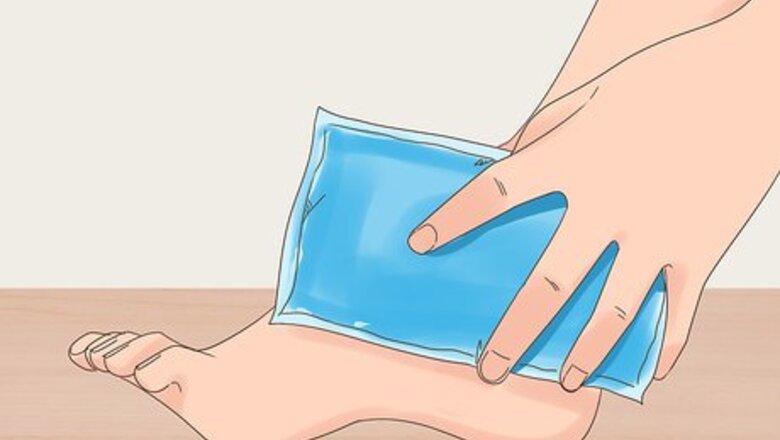
views
Treating Bruises
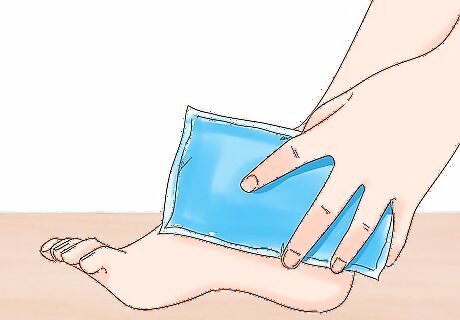
Ice the bruise. Putting an ice pack on the bruise will reduce swelling and help it heal more quickly. Wrap an ice pack, resealable plastic bag filled with ice chips, or a bag of frozen veggies in a towel and apply it to the bruise for 10-20 minutes at a time. Repeat multiple times over the first 2 days. Flexible gel-filled ice packs, specifically designed for injuries, are available from sports shops. Athletes usually keep a few on-hand to fight bruises.
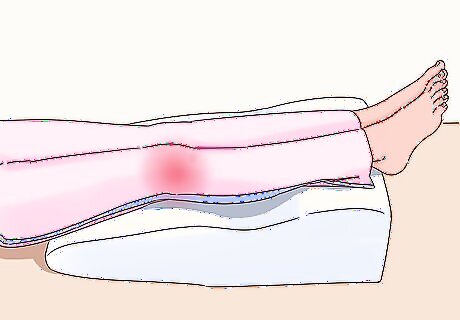
Elevate the area. Reduce blood flow to the bruised area with a little help from gravity in order to prevent blood from pooling and reduce discoloration. Aim to elevate the bruised part of your body a few inches above your heart. For instance, if the bruise is on your leg, settle onto the couch and rest your leg on top of a few pillows. If your arm is bruised, try to prop it up on an armrest or a few pillows, so that it's at heart-level or above. If your torso is bruised, you might be out of luck. Focus on icing the area instead.
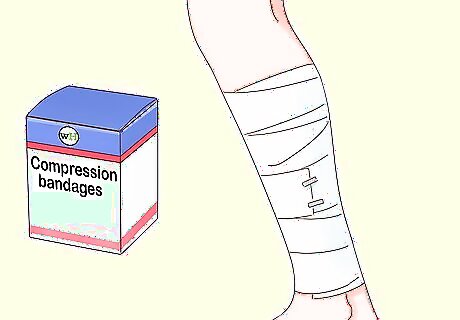
Wrap the bruise with a compression bandage. Compression bandages decrease the blood flow to the wrapped area, which can prevent blood from pooling at the site of the bruise. They also help reduce swelling and pain. Don’t wrap the bruise too tightly, though; simply wind an elastic bandage around the area. Only wrap the area for the first 1-2 days.

Rest if possible. Working your muscles increases blood flow to that area, which won’t help a bruise heal. Call it a day and cool your jets, both to prevent further injury and give your bruise a chance to heal. Hang out on the couch. Watch a movie, play a game, read a book, or just do something that doesn't require much physical activity. Head to bed early. Your body needs sleep to repair itself, so hit the hay as soon as you feel tired.
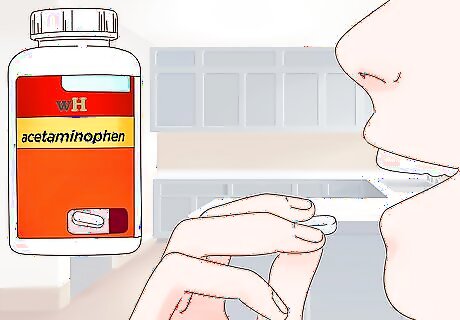
Take acetaminophen if necessary. If the bruise is particularly painful, take an over-the-counter painkiller for relief. Follow the dosage instructions and never take more than the recommended amount. Avoid aspirin or ibuprofen, which act as blood-thinners and could make your bruise worse.
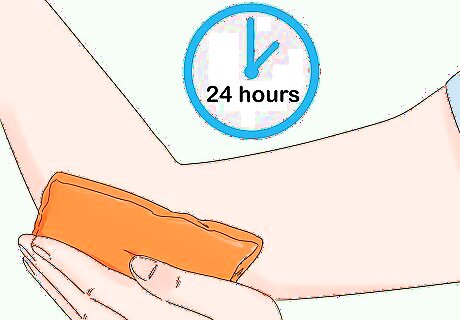
Apply moist heat after 24 hours. After the first 24 hours or so, applying moist heat can help get rid of a bruise. Use a reusable heat pack or a warm washcloth rather than something like an electric blanket as wet heat is better for injuries than dry heat. Apply the heat pack for a couple of minutes at a time, on and off for 1-2 days.
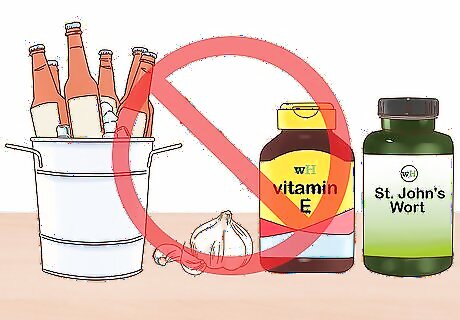
Stay away from certain foods that can prolong bruising. Some foods and supplements, including St. John's Wort, omega 3 fatty acids, vitamin E, ginkgo, ginseng, alcohol, and garlic can all prolong bruising. Stay away from these foods while you heal.
Trying Home Remedies
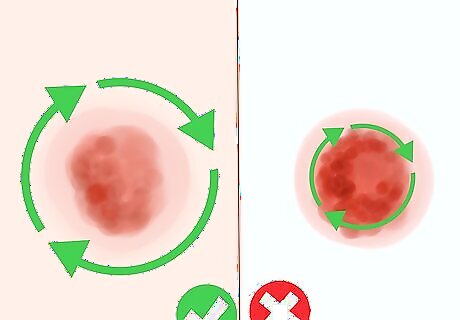
Massage the area around the bruise. Don't massage directly around the bruise. Massage 1–2 centimeters (0.39–0.79 in) around the outside of the visible bruise, as they tend to be bigger than they look. Directly massaging a bruise can irritate it and make it worse. Do this several times a day beginning the day after the bruising occurs. This will help your body's normal lymphatic process to clear it away. Keep in mind that the pressure shouldn't be painful. If the bruise is too painful to touch, hold off.

Spend 10-15 minutes in the sun each day. Ultraviolet light breaks down bilirubin, which is the product of hemoglobin breakdown that causes the yellowish color of a bruise. If possible, expose the bruise to sunlight to accelerate the isomerization of the remaining bilirubin. Around 10-15 minutes of direct sunlight a day should be enough to help break up your bruise without leading to a sunburn. Apply sunscreen to the rest of your exposed skin when outdoors.
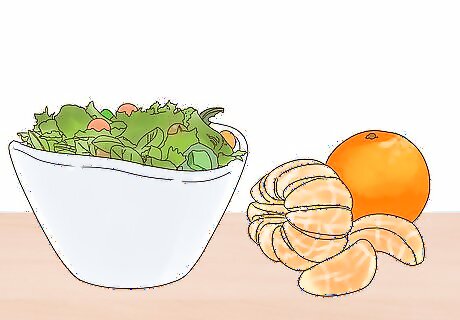
Get more vitamin C. Vitamin C increases the amount of collagen around blood vessels, which can help get rid of bruising. Eat foods like oranges and dark, leafy greens to ensure you’re getting vitamin C in your diet.
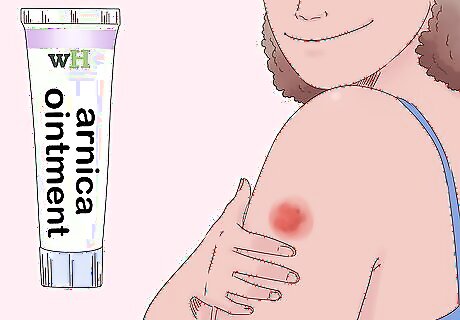
Use arnica ointment or gel daily. Arnica is an herb that has long been recommended for bruises. It contains a compound that reduces inflammation and swelling. Pick up an ointment that contains arnica from a drugstore, and rub it over the bruise once or twice a day. Do not apply arnica to a cut or an open wound.
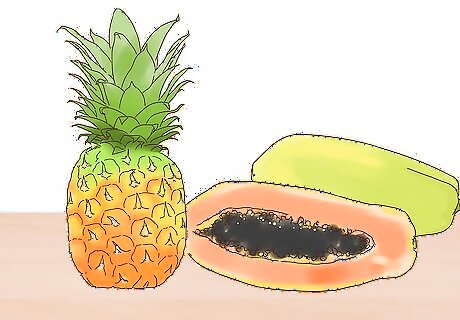
Eat pineapple or papaya. Bromelain, a digestive enzyme found in pineapple and papaya, breaks down proteins that trap fluids in the tissues after an injury. Eat pineapple or papaya once a day to help speed up the healing process.
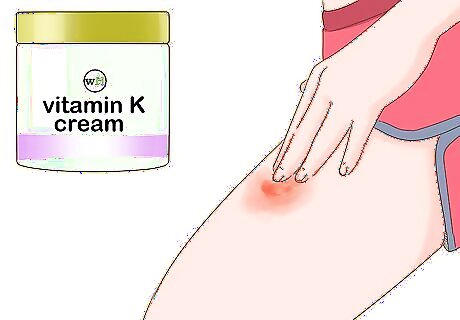
Spread vitamin K cream over the area. Vitamin K can help stop the bleeding as it causes your blood to clot. Visit a drugstore and pick up a vitamin K cream. Apply it as directed on the package to help get rid of the bruise.
Seeking Medical Treatment
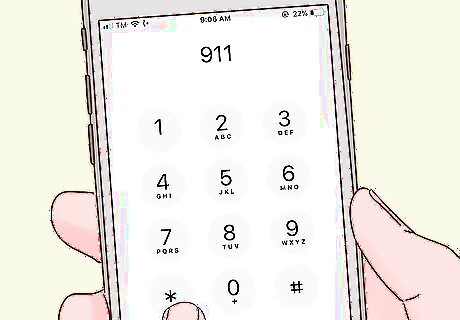
Call emergency services if you feel extreme pressure around the bruise. If you feel pressure, severe pain, tenderness, muscle tightness, tingling, burning, weakness, or numbness in the area around the bruise, you may have compartment syndrome. Call emergency services so you can get to a hospital immediately. Compartment syndrome occurs when there is swelling and/or bleeding in a muscle compartment. The pressure in the muscle compartment decreases the amount of blood flow to the area, which can cause nerve and muscle damage.
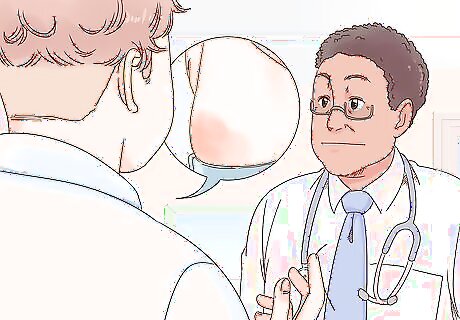
Seek medical attention if you have a lump over the bruise. If a lump forms on top of the bruise, it could be a hematoma. Visit your healthcare provider as soon as possible, as the blood may need to be drained from the area. A hematoma forms when blood pools under the surface of the skin, causing swelling.
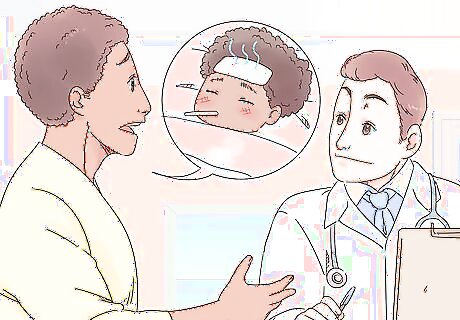
Visit a healthcare provider if you think you have a fever or infection. If the skin is broken and the area around the bruise is red, hot, or oozing pus, it may indicate an infection. Similarly, if you have a fever, this could also be due to an infection. If you notice these symptoms, make an appointment to see your healthcare provider as soon as possible.











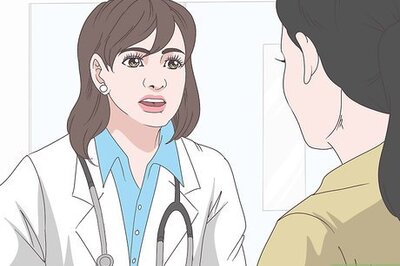


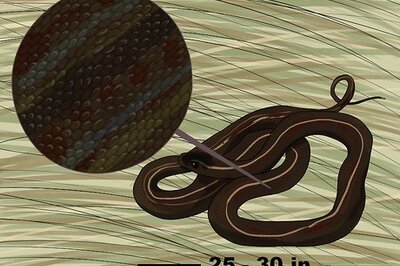
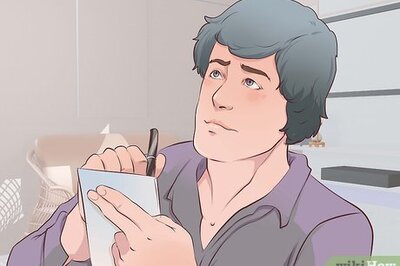




Comments
0 comment